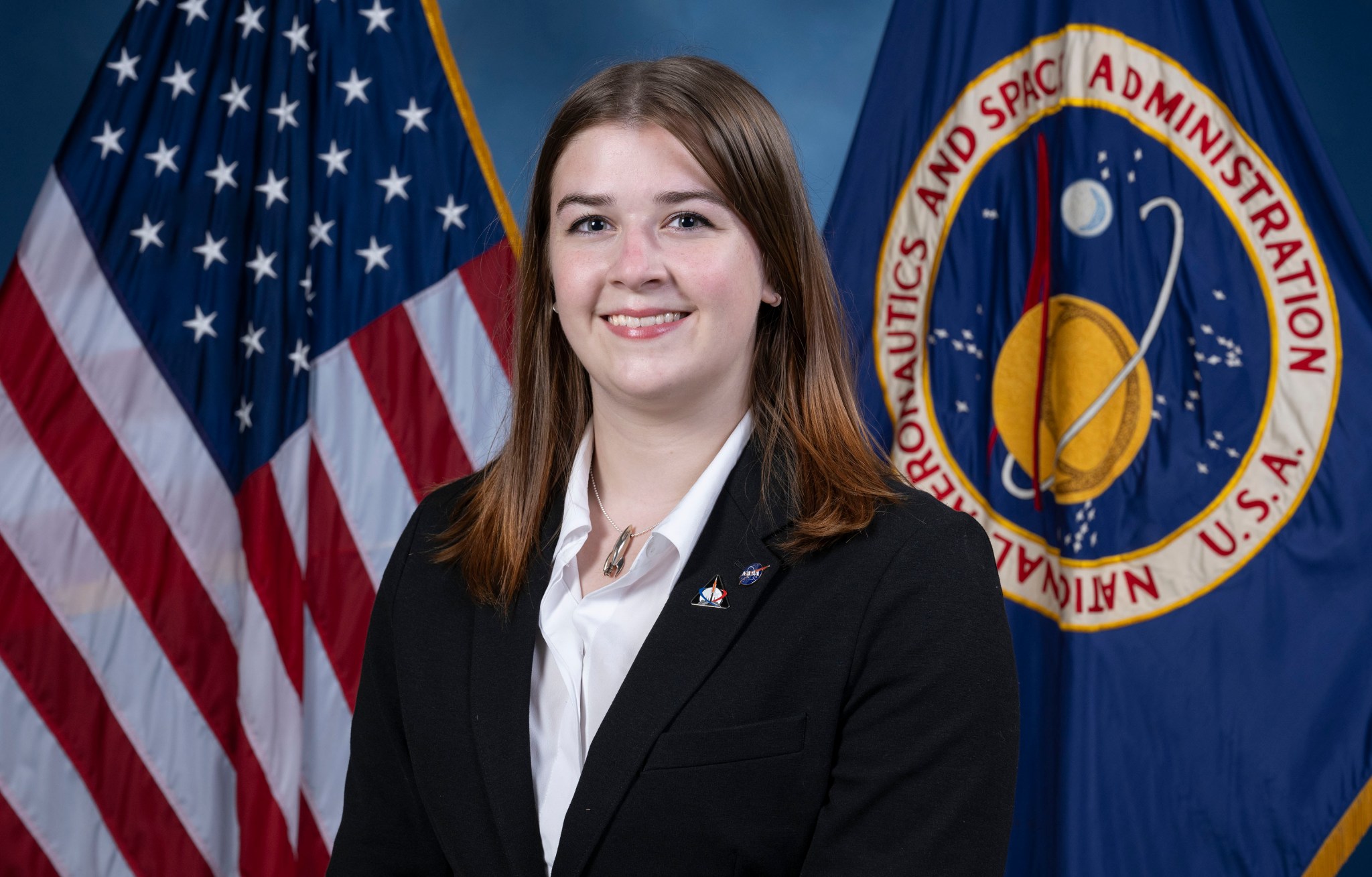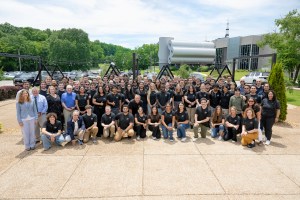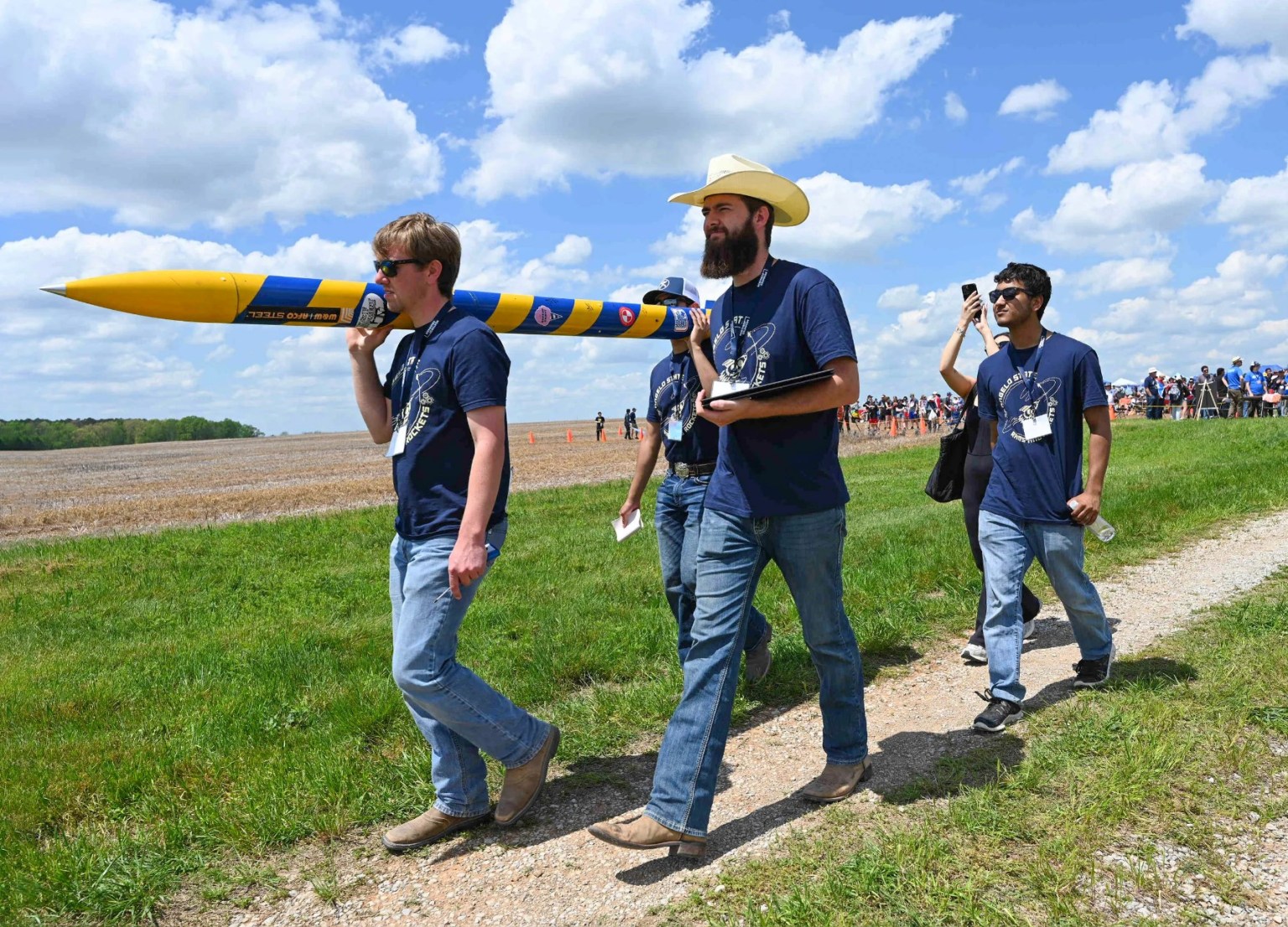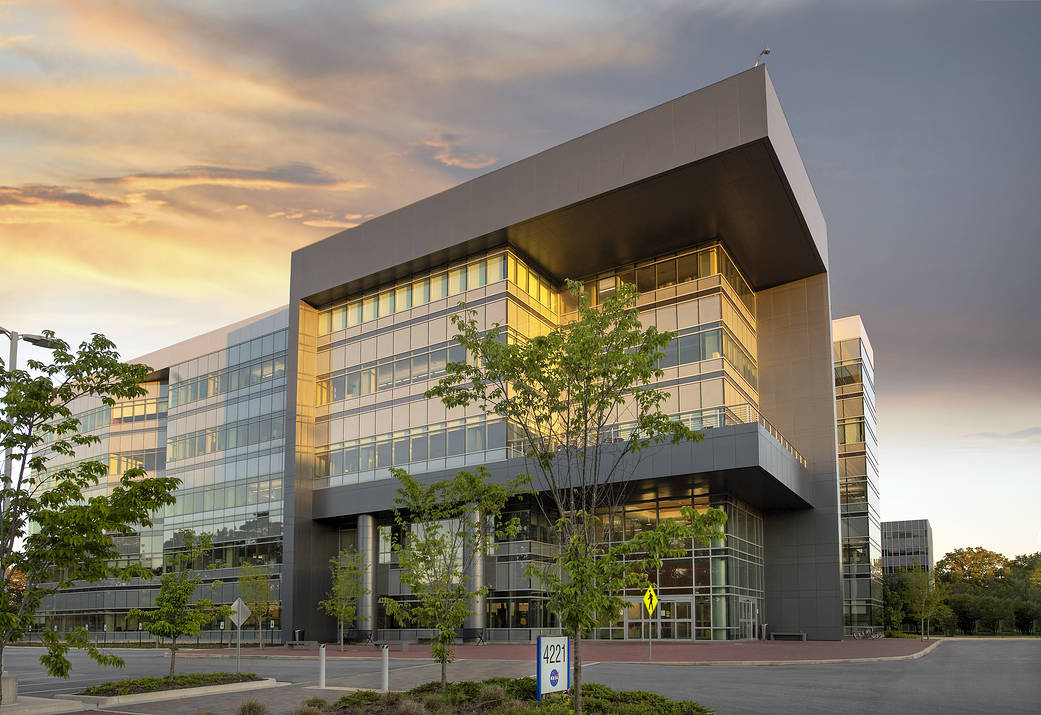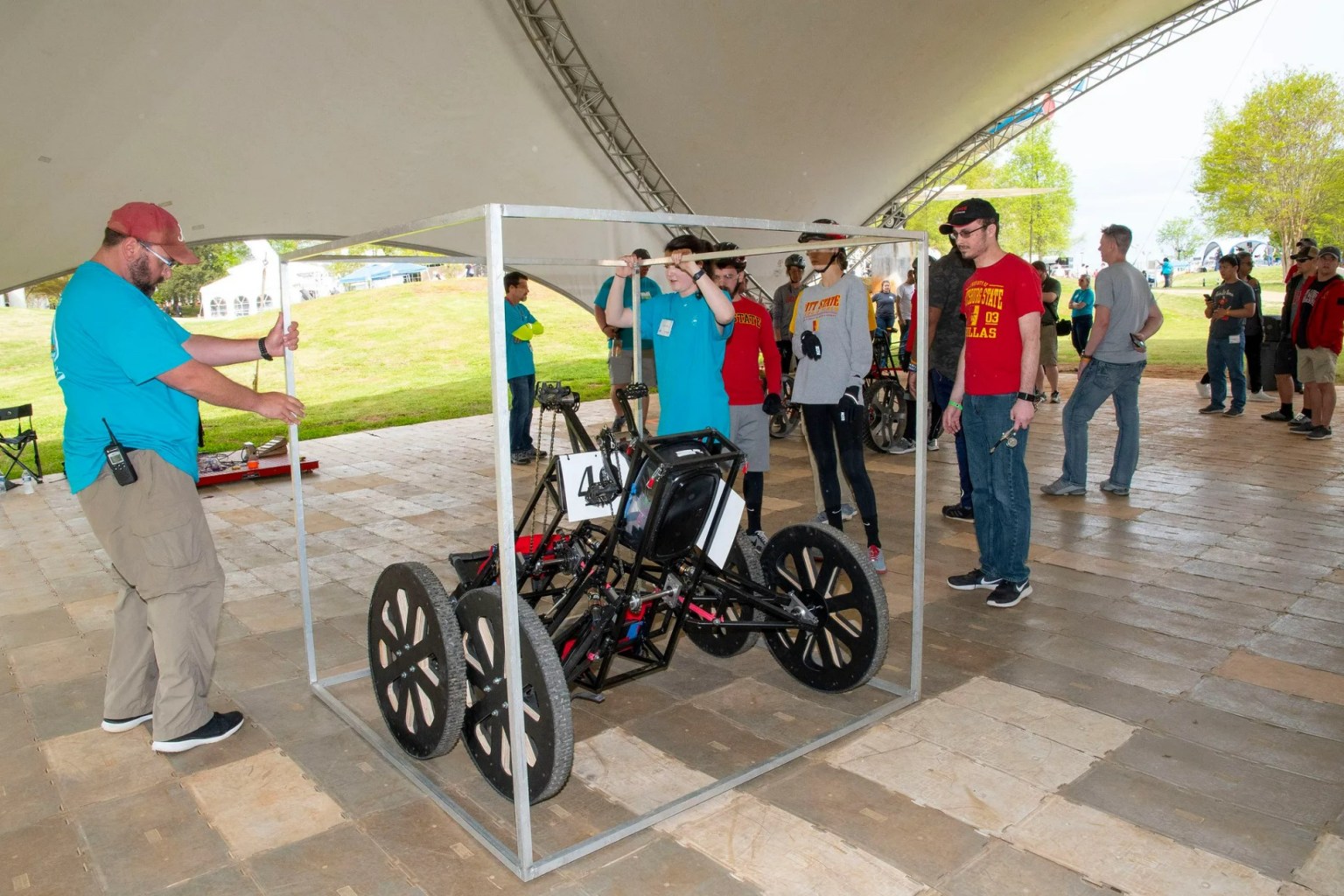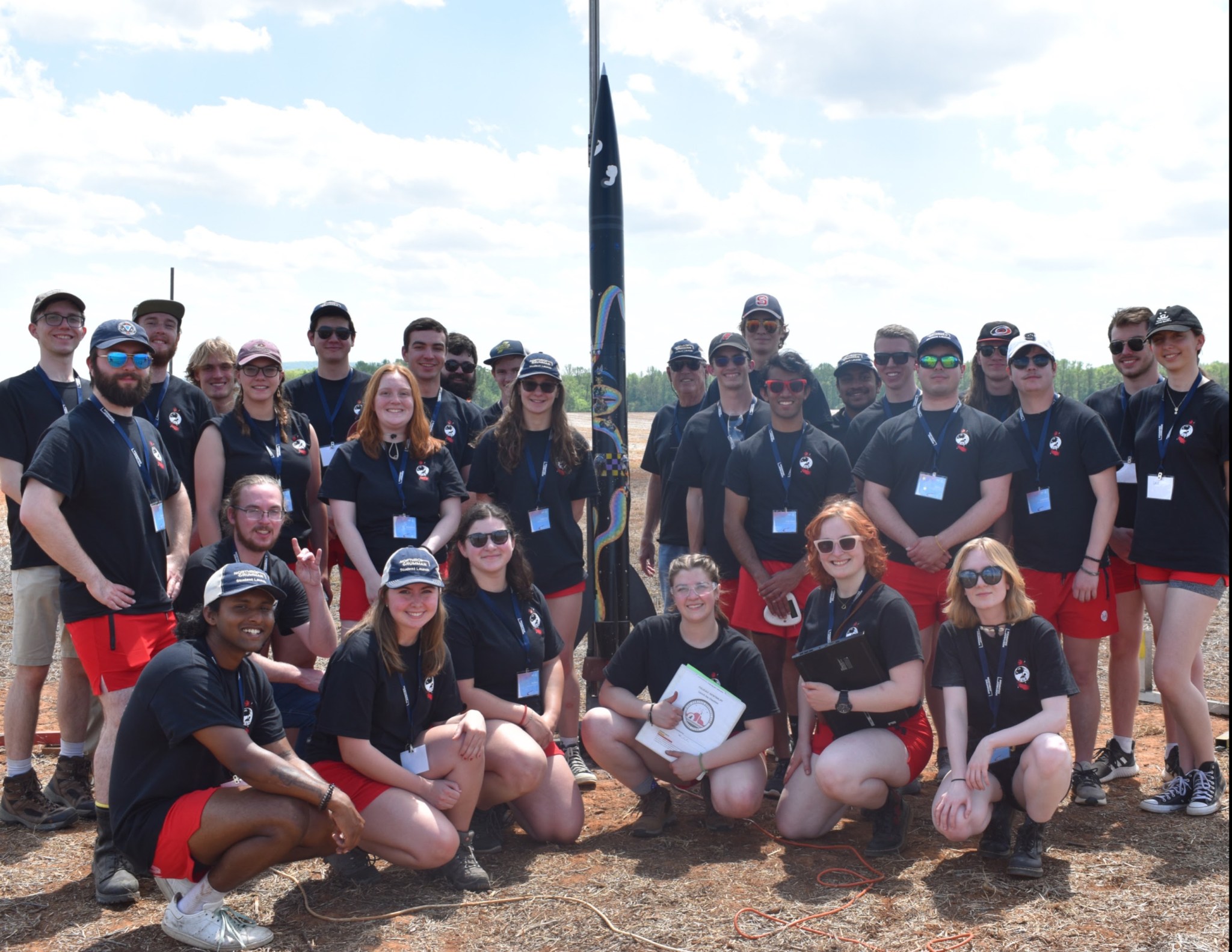
By Jessica Barnett
Sometimes, all it takes is a few years and the right people to completely change a person’s career trajectory. One such example is Meredith Patterson, an aerospace engineer at NASA’s Marshall Space Flight Center in Huntsville, Alabama, who went from knowing little to nothing about rockets to being part of the team that is working to put humans back on the Moon.
She credits her success in large part to NASA’s Student Launch, which not only helped her uncover her passion for aerospace engineering but gave her the knowledge and experience she needed to get where she is today.
The annual Student Launch competition invites student teams from across the U.S. to spend nine months designing, building, and testing a high-powered rocket carrying a scientific or engineering payload. The hands-on, research-based engineering activity culminates each year in a final launch in Huntsville. This year’s challenge conclusion is set for April 10-14, with the final launch date set for April 13 at Bragg Farms in Toney, Alabama.
While Student Launch is open to students as young as sixth grade, Patterson was in her junior year of high school when she learned about the competition during a tour of North Carolina State University.
“When I walked into the rocketry lab there, I knew then, however many years it was going to take, I wanted to be the person who was able to run that and help put together everything for us to be successful in Student Launch,” Patterson said.

She attended North Carolina State for five years, participating in each year’s Student Launch competition and leading the team to a fourth-place win during her final year. She received her Level I and Level II certifications from Tripoli Rocketry Association through Student Launch, and she was able to connect with mentors from Tripoli and the National Rocketry Association that helped her get the hands-on experience and technical know-how she believes are key to success in the aerospace industry.
“My leadership skills grew, my system engineering skills grew, and my technical writing skills grew,” Patterson said. “Having mentors through the competition allowed me to ask questions and learn on the technical side of things, too. I think I use more information from Student Launch day to day than from almost any of my classes in college.”
She said attending an engineering camp at 16 years old first unlocked her interest in spaceflight and rocketry, but it was through Student Launch that she got to really dive in and deepen her passion.
“It’s crazy to think that less than 10 years ago, I had never even built a rocket, and now I can build Level II-sized rockets on my own and I’m actively working on the biggest solid rocket boosters in the world,” Patterson said. “Just in the past year, I’ve gone from the L-class motor that we used for Student Launch to casting 11-inch motors to now actively watching the casting of the SLS (Space Launch System) boosters.”
Student Launch is part of NASA’s Artemis Student Challenges. Seventy teams representing 24 states and Puerto Rico were selected to compete in the 2024 Student Launch Challenge.
Marshall hosts the Student Launch challenge with management support provided by NASA’s Office of STEM Engagement – Southeast Region. Funding is provided, in part, by NASA’s Space Operations Mission Directorate and NASA’s Next Gen STEM project.





























